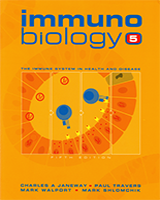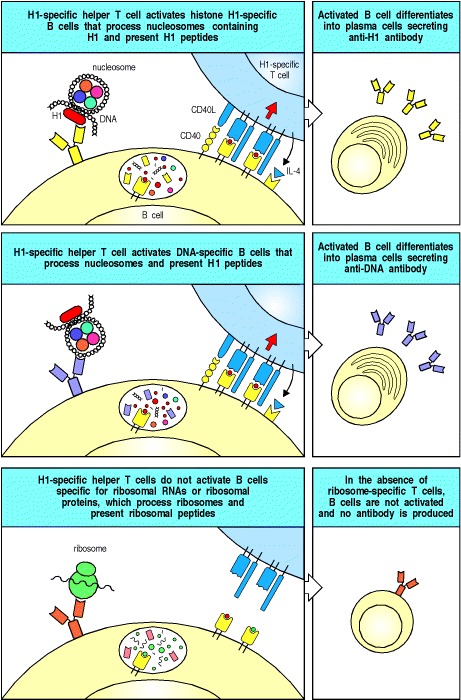From: Autoimmune responses are directed against self antigens

NCBI Bookshelf. A service of the National Library of Medicine, National Institutes of Health.

In an SLE patient, a B cell specific for the H1 histone protein in nucleosomes, for example, will bind and internalize the whole nucleosome, and present peptides derived from H1 histone as well as other peptides. This B cell can receive help from a T cell specific for one of the peptides derived from H1 (top panels). A B cell that recognizes the DNA in the nucleosome can also internalize the nucleosome, process it, and present the H1 peptide to that T cell and be activated by it (center panels). Thus, a single auto-reactive helper T cell can stimulate a diverse antibody response, but the antibodies will be restricted to those specific for the constituents of a single type of particle. B cells able to bind ribosomes, for example, do not present the H1 peptide and so will not be activated to produce anti-ribosomal antibodies in this patient (bottom panels).
From: Autoimmune responses are directed against self antigens

NCBI Bookshelf. A service of the National Library of Medicine, National Institutes of Health.